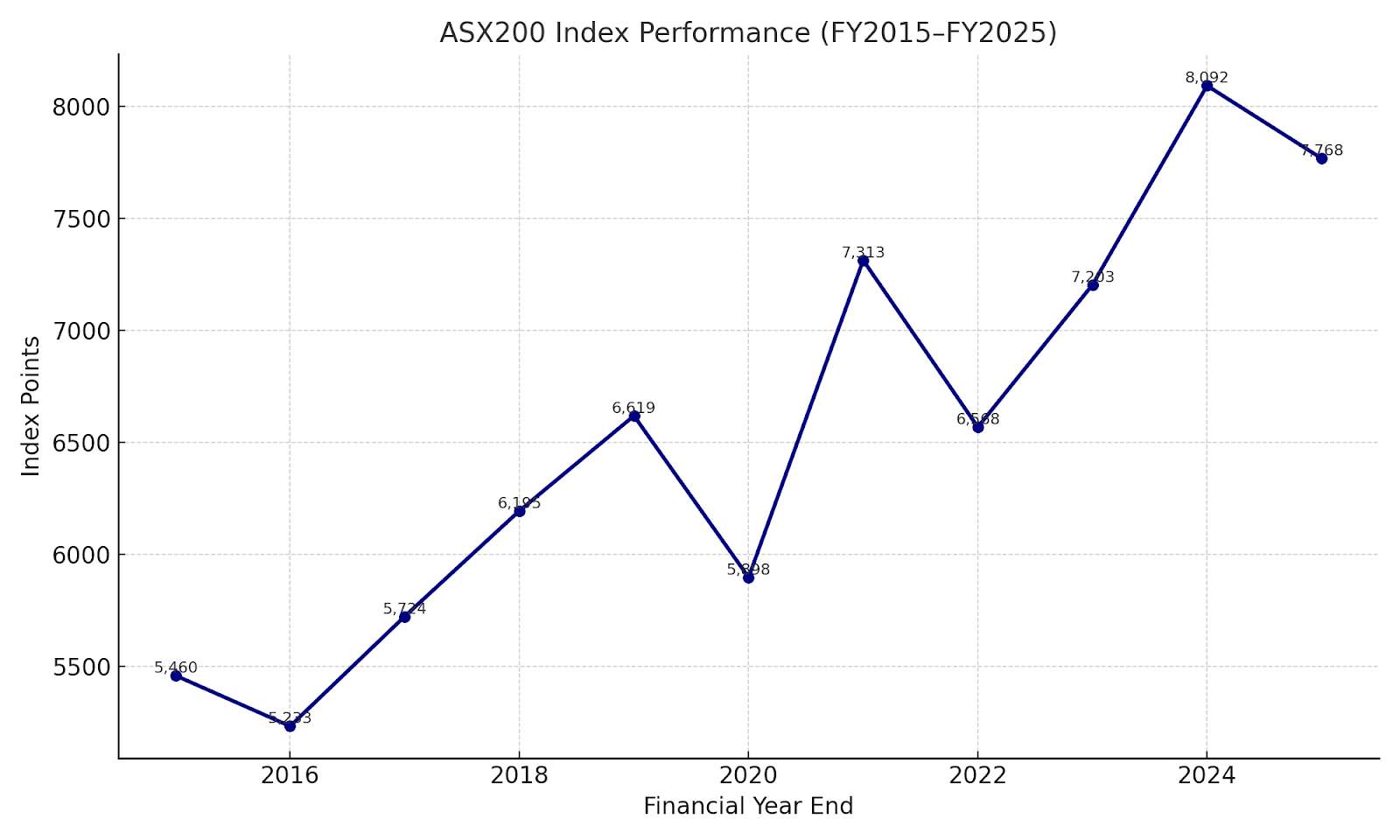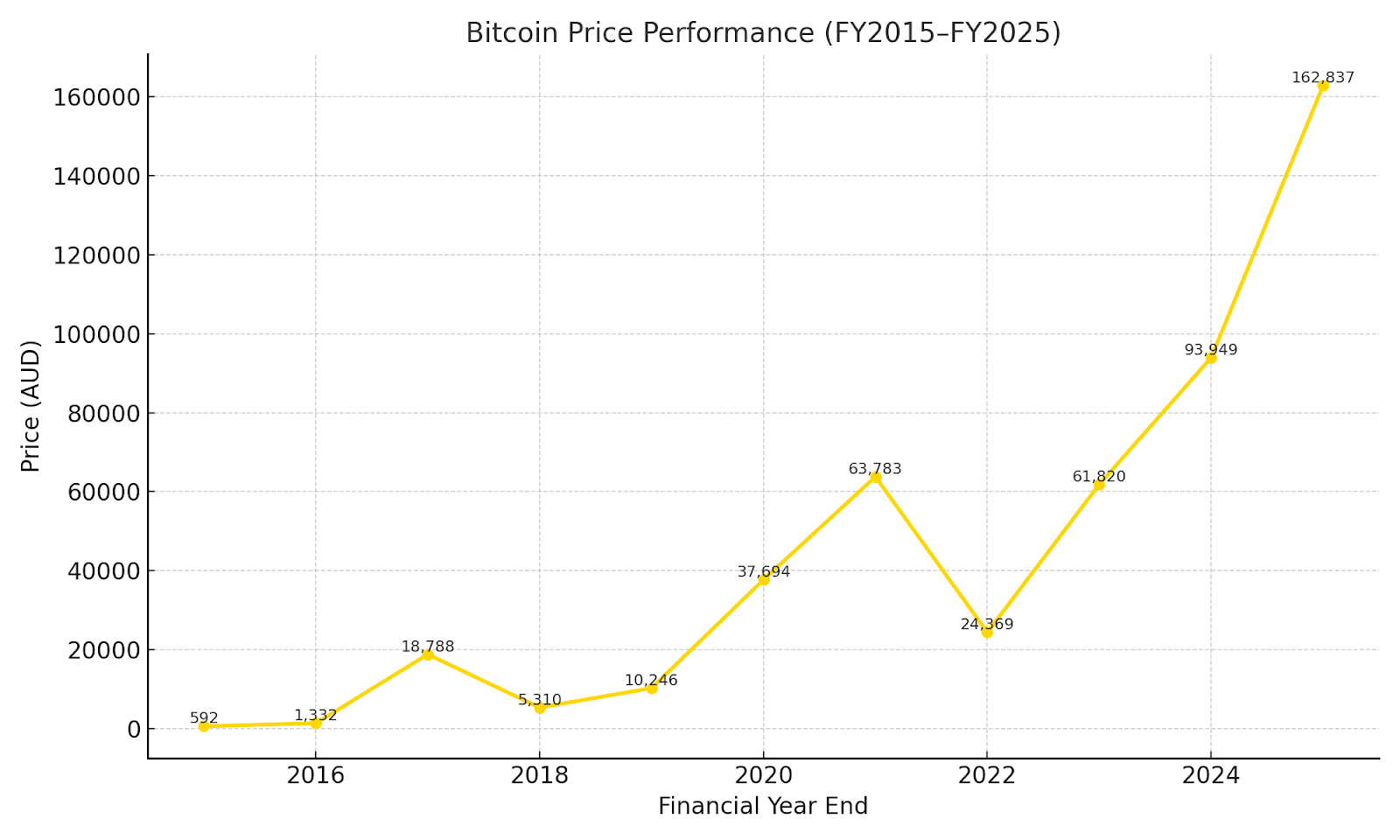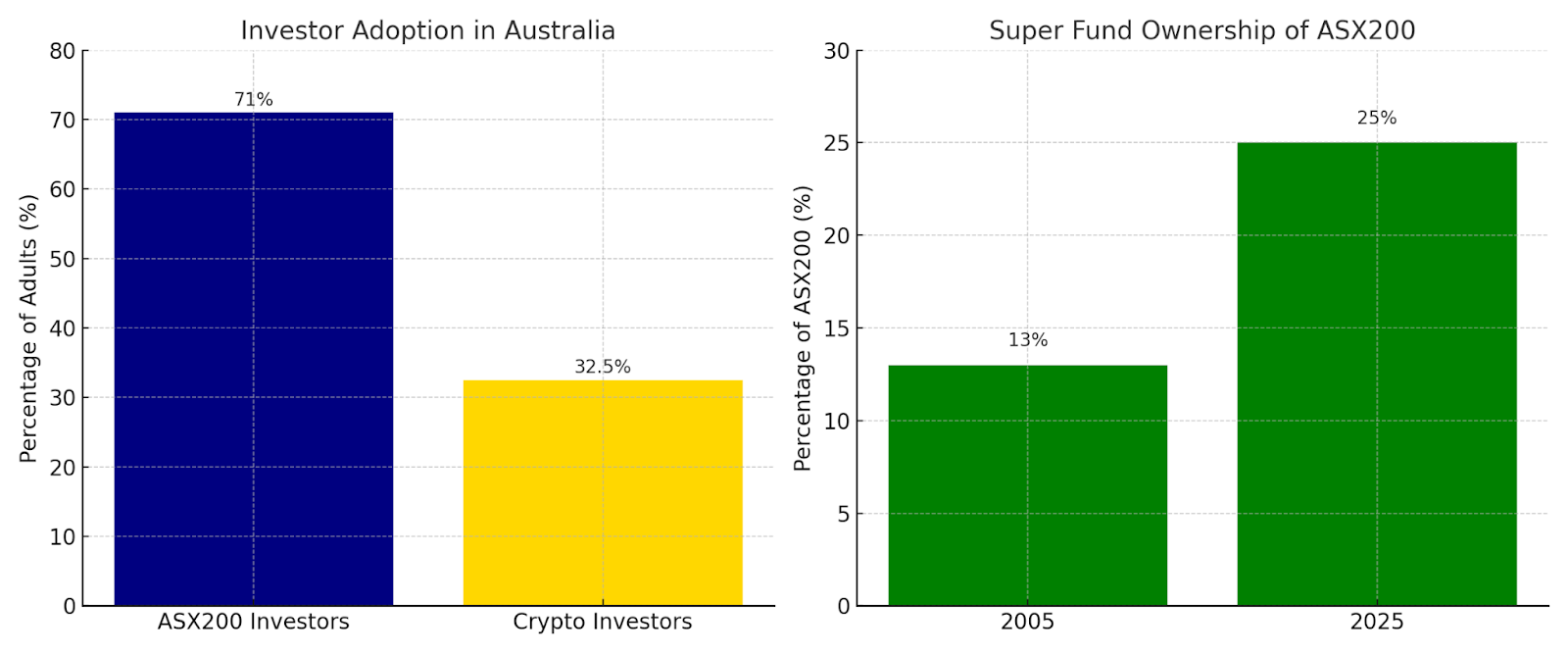
Navigating today's investment landscape can be tricky. You have Bitcoin, the headline-grabbing digital asset, versus the S&P/ASX 200, a collection of Australia's most established companies. This article explores their characteristics, historical performance and risk profiles to provide a clearer picture of how they differ.
Bitcoin, which was launched in 2009, became the first successful decentralised blockchain technology by not requiring the use of central banks. Its supply is capped at 21 million coins, and periodic “halving” events slow the rate of new issuance. Adoption is widely increasing globally among individuals, the private sector and institutions.
The ASX200 which has been around longer than Bitcoin, is an index that tracks the performance of Australia’s 200 largest companies listed on Australian Securities Exchange (ASX). Within the 200 companies, it covers nearly every sector which then makes it a good indicator of the Australian economy.
Bitcoin and ASX200 are vastly different assets with many differing characteristics.
Bitcoin, which is fairly new in theory as an asset, is a decentralised, borderless digital asset. Operating differently to other assets operating on a blockchain network without a centralised authority with all transactions being anonymously recorded. Markets are open 24/7 and can be traded wherever you are in the world and can make quick and easy withdrawals if needed. Returns on Bitcoin come from capital gains after withdrawing your Bitcoin into the Australian dollar.
ASX200, is comparatively different compared to Bitcoin is operates as a stock for investors it’s still a digital asset like Bitcoin but is highly regulated. Markets are only open during Australian business hours and can’t be accessed outside of them. Investors in ASX 200-linked products may receive dividends from underlying companies, depending on the structure of the investment. To access the investment, investors use brokerage platforms and superannuation funds.
At the close of FY2015, Bitcoin was priced at A$591.84 per BTC. By the close of FY2025, it had reached A$162,837.40 an overall rise of approximately 27,424%, equating to a compound annual growth rate (CAGR) of about 87%. This impressive climb was marked by periods of extreme volatility, including drawdowns of more than 50% in FY2018 and FY2022, followed by strong recoveries.
Over the same period, the ASX200 index ended FY2015 at 5,459.6 points and finished FY2025 at 7,767.5 points, a total gain of roughly 42% and a CAGR of around 3.6% (excluding dividends). The ASX200’s movement has been comparatively steady, with smaller annual changes and a more predictable performance pattern.


Bitcoin
Price movements in Bitcoin have historically been influenced by regulatory developments, macroeconomic trends and investor sentiment. While oversight is expanding in several jurisdictions, rules differ widely between countries.
Users face operational risks such as exchange breaches or loss of private keys. Choosing secure, compliant trading platforms and learning how custody works can help reduce these risks, but digital assets remain inherently volatile.
ASX200
On the other hand, the ASX200 is highly regulated, this ensures investor protection and transparency. All companies listed on the ASX need to meet obligations set such as clear financial reports.
The ASX 200 is a market-capitalisation–weighted index, meaning top companies dominate its returns. For instance, Commonwealth Bank alone represents approximately 11.5% of the index, and the top 10 stocks together account for nearly 47–49% of the total value. While strong performance by these giants can significantly boost the index, it also introduces concentration risk; if one of these holdings underperforms or collapses, it can disproportionately drag down the entire ASX 200.
Bitcoin can be bought from anywhere in the world at any time of the day. It can be purchased in small amounts with only a small amount of starting capital needed. This level of accessibility appeals to a wide range of retail investors, especially younger people and those looking for alternative investments.
The ASX200 is accessed through a brokerage account or a superannuation fund, and can only be traded during Australian market hours. This can make it less accessible for some investors compared to Bitcoin.
The ASX Australian Investor Study 2023 found that 51 percent of Australian adults invest in assets outside of their home and superannuation. Of those investors, 71 percent own listed Australian shares such as those in the ASX200.
Superannuation funds are a major source of capital for the ASX200, holding just under 25 percent of the index. This is down from 13 percent in 2005 as more capital is being invested offshore. Bitcoin is still held by fewer Australians, but adoption continues to grow both locally and globally.

Regulatory progress, technological development and education continue to shape both markets. Institutional interest in Bitcoin and broader adoption of blockchain technology may influence future demand, while the ASX 200 remains tied to the performance of Australia’s corporate sector and overall economic conditions.
This article is for general informational and educational purposes only. It does not constitute financial advice, investment advice, or a recommendation to buy or sell any asset. Past performance is not indicative of future results. Individuals should seek professional advice before making financial decisions.
Author: Ben Bland
Linkedin Profile
"I have been a user of the Elbaite service for a long time and I keep coming back to use this service on a regular basis. An extra couple of stars should be added for the service personnel. Problems are resolved quickly and the patience exhibited by these people are legendary."
Andre - Elbaite Client